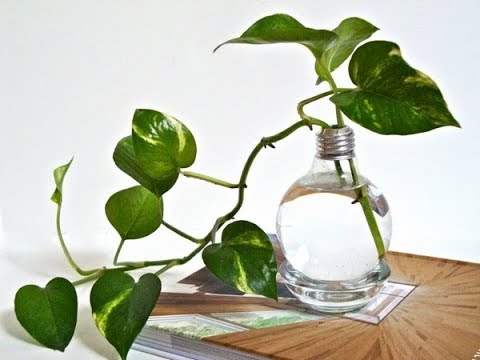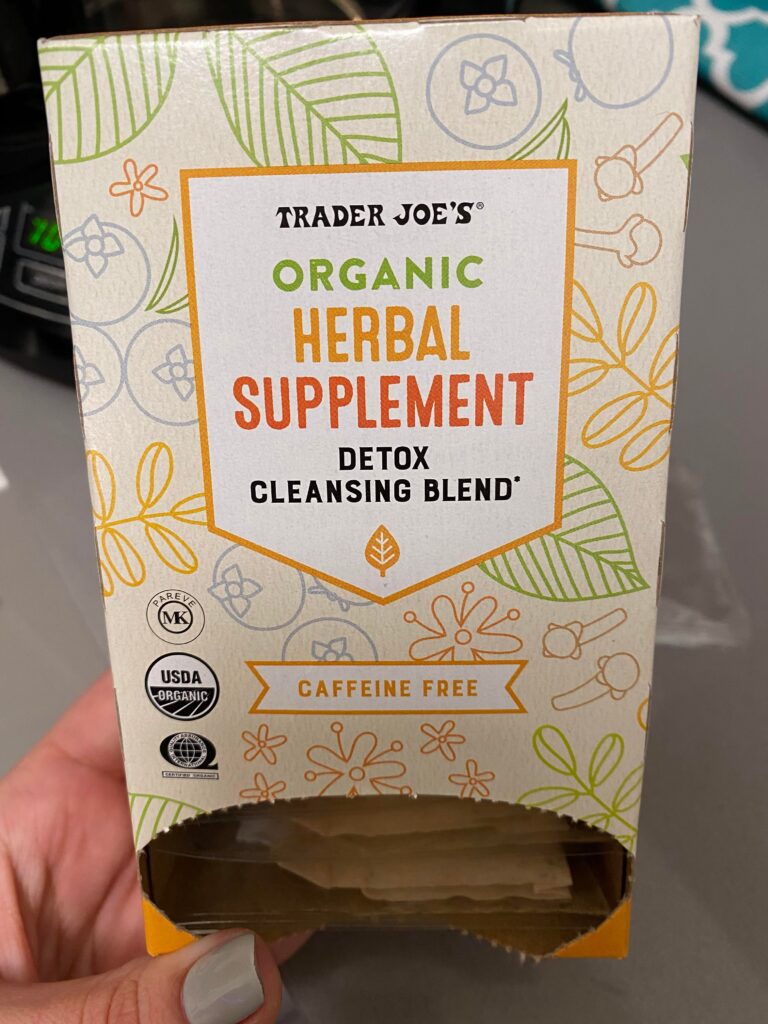Money plants should be watered with plain tap water, but adding a small amount of liquid fertilizer can promote growth. Growing money plants can be a rewarding experience, whether you’re filling an empty corner in your home or just trying to add some greenery to your office.
These plants have decorative, heart-shaped leaves and are extremely easy to maintain, making them a popular choice for beginner gardeners. Watering your money plant is one of the most important aspects of its care, and adding a bit of liquid fertilizer to your water can help it grow even better.
In this article, we’ll go over how to care for your money plant and exactly what to add to your water for optimal growth.

Credit: findgardening.com
Understanding The Needs Of Money Plant
Money plant, also known as devil’s ivy, is a popular houseplant that is often touted as a symbol of prosperity and good fortune. This plant is relatively easy to care for and can thrive in a variety of conditions. However, to ensure that your money plant grows and flourishes, it is important to understand its specific needs.
In this blog post, we will explore the key requirements of money plant and highlight what you should add to the water when caring for this plant.
Water Requirements Of Money Plant
Money plant thrives in moist soil and appreciates regular watering. However, it is important to strike a balance between watering too much and too little. Overwatering can lead to root rot, while underwatering can cause the plant to wilt and die.
Generally, you should water your money plant once a week, allowing the soil to dry out slightly between waterings. Additionally, it is a good idea to add a few drops of liquid fertilizer to the water once a month during the growing season to encourage healthy growth.
Light Requirements Of Money Plant
Money plant prefers bright, indirect light but can also tolerate low light conditions. Direct sunlight can be harmful to this plant, causing its leaves to scorch and wither. To ensure your money plant receives enough light, it is best to place it near a north or east-facing window.
If your money plant is not receiving enough light, you may notice that its leaves turn yellow or brown and drop off.
Soil Requirements Of Money Plant
Money plant can grow in a variety of soil types, including regular potting mix, peat moss, and perlite. The most important thing is that the soil is well-draining and moist. You can add coarse sand or perlite to the soil mix to improve drainage and prevent waterlogging.
Additionally, it is a good idea to repot your money plant every 2 to 3 years to ensure that it has enough space to grow.
Temperature Requirements Of Money Plant
Money plant can tolerate a wide range of temperatures, from 15°c to 30°c. However, it prefers warm, humid conditions and can suffer if exposed to cold drafts or sudden temperature fluctuations. It is best to keep your money plant in a room with a consistent temperature and protect it from extreme temperatures and air currents.
To conclude, caring for money plant is relatively easy, but it is essential to understand its specific needs. By following these simple tips, you can ensure that your money plant remains healthy, lush, and vibrant for years to come.
Natural Additives For Watering Money Plant
Money plants are an all-time favorite for indoor gardening enthusiasts. They are good-looking, easy to care for, and believed to attract financial prosperity in the house. Although these plants are hardy and can survive in low light conditions for a long time, giving them the right type of care and nourishment can make them grow even more lush and healthy.
One key aspect of caring for your money plant is to add natural additives to the water that you use to water your plant. In this section, we will discuss some popular natural additives for watering money plants.
Neem Oil
Neem oil is a natural pesticide that can be used to keep your money plant free from pests and insects. It also helps in promoting healthy growth by stimulating photosynthesis and boosting the plant’s immune system. Here are some key points:
- Neem oil has anti-fungal, anti-inflammatory, and anti-bacterial properties.
- It can be sprayed directly onto the leaves or mixed with water during watering.
- Neem oil helps in keeping the plant free from pests like mealybug, spider mites, and aphids.
Epsom Salt
Epsom salt is a natural supplement that is rich in magnesium and sulfur and can be used to nourish your money plant. It is a readily available fertilizer that can help in promoting green foliage and overall growth. Here are some key points:
- Epsom salt is water-soluble and can be mixed with water during watering.
- It helps the plant in chlorophyll formation, which is essential for healthy foliage growth.
- Epsom salt can help in preventing yellowing of leaves and plant diseases caused by a deficiency of magnesium.
Banana Peels
Banana peels are a natural source of potassium, which is a crucial nutrient for plant growth and development. Adding banana peels to the soil can help in boosting potted money plant health. Here are some key points:
- Banana peels can be cut up into small pieces and mixed with the soil or added to the water during watering.
- They help in promoting root growth and overall plant health.
- Banana peels can also help in preventing bacterial and fungal diseases.
Vinegar
Vinegar is a natural acid that can help in maintaining the ph level of the soil in which your money plant grows. It is especially useful for gardeners living in hard-water areas where the alkalinity of the water can affect plant growth.
Here are some key points:
- Vinegar can be mixed with water and used for watering the money plant.
- It helps in preventing the accumulation of mineral deposits and maintaining the ph level of the soil.
- Vinegar also helps in retaining the green color of the leaves and preventing fungal and bacterial diseases.
Adding natural additives to the water used for watering your money plant can keep them green and healthy. Natural additives like neem oil, epsom salt, banana peels, and vinegar are readily available, affordable, and easy to use, and can help you to keep your money plant healthy and beautiful for years to come.
Chemical Additives For Watering Money Plant
Money plants are one of the easiest plants to care for, but you still need to know how to care for them properly. One thing you must not overlook is the kind of water you give it. Water contains impurities that can negatively affect the plant’s growth and health.
In this post, we will discuss what to add in water for money plant, with a focus on chemical additives.
Commercial Fertilizers
Commercial fertilizers are a convenient way to provide your money plant with the necessary nutrients for growth and development. Here are a few things you need to know about commercial fertilizers:
- Choose a fertilizer that is high in nitrogen, phosphorus, and potassium (npk). Nitrogen helps with leaf growth, phosphorus is necessary for the plant’s root system, while potassium helps the plant withstand stress.
- Dilute the fertilizer before using it. A mixture of one tablespoon of fertilizer per gallon of water is enough.
- Apply the diluted fertilizer once every two weeks. Over-fertilization can cause root damage, so be careful not to use too much.
Fish Emulsion
Fish emulsion is a natural fertilizer that promotes healthy plant growth. Made from ground fish, this organic fertilizer is rich in nutrients that are essential for plant growth. Here are a few things you need to know about fish emulsion:
- Use one tablespoon of fish emulsion per gallon of water.
- Apply the mixture to the soil around the plant once every two weeks.
- Be careful not to overuse fish emulsion because it can cause a pungent odor.
Rooting Hormones
Rooting hormones contain auxins, which are natural plant growth regulators that help stimulate root growth. Here are a few things you need to know about rooting hormones:
- Dilute the rooting hormone according to the instructions on the package.
- Use the diluted rooting hormone to water the plant once every week.
- Do not use too much rooting hormone because it can cause root damage.
Adding chemical additives to your money plant’s water can help promote healthy growth and development. Commercial fertilizers, fish emulsion, and rooting hormones are all excellent options to consider, but be sure to use them in the appropriate dosage. With the right care, your money plant will thrive and add beauty to your home!
Frequently Asked Questions On What To Add In Water For Money Plant
How Often Should I Add Fertilizer To My Money Plant’S Water?
You should add fertilizer to your money plant’s water once every 2-3 weeks during growing season. Do not over-fertilize, as this can lead to root burn and damage the plant.
What Type Of Fertilizer Is Best For A Money Plant?
For a money plant, a balanced, water-soluble fertilizer with equal parts nitrogen, phosphorous, and potassium is recommended. Alternatively, you can use a specialized fertilizer labeled for use with indoor plants.
Can Tap Water Be Used To Water A Money Plant?
Yes, tap water can be used to water a money plant. However, it’s best to let the water sit for 24 hours before using it, as this will allow any chlorine to dissipate. Alternatively, you can use distilled or filtered water.
How Often Should I Change The Water In My Money Plant’S Container?
Change the water in your money plant’s container every 2-3 weeks to prevent the growth of algae and bacteria. Rinse the container thoroughly before refilling it with fresh water and fertilizer.
What Other Factors Can Affect The Growth Of A Money Plant?
In addition to water and fertilizer, temperature, light, and humidity can also affect the growth of a money plant. Money plants prefer bright, indirect light, and thrive in temperatures between 65-85°f. They also appreciate high humidity, so consider using a humidifier or placing a tray of pebbles filled with water under the plant.
Conclusion
From this article, we can conclude that the money plant is an easy-to-care-for indoor plant that only requires water and minimal attention. To ensure its growth and well-being, you must know what to add to the water. What you put in the water depends on the requirements of the specific type of money plant you have.
Some thrive in tap water, while others require distilled or rainwater. Liquid fertilizers or homemade mixtures such as fish emulsion or coffee grounds can provide additional nutrients. However, be careful not to over-fertilize, which can damage the plant. Additionally, adding a few drops of hydrogen peroxide can help prevent root rot and bacterial growth.
With the right water treatment, the money plant can purify the air and bring good energy and luck to your home or office. Happy gardening!



